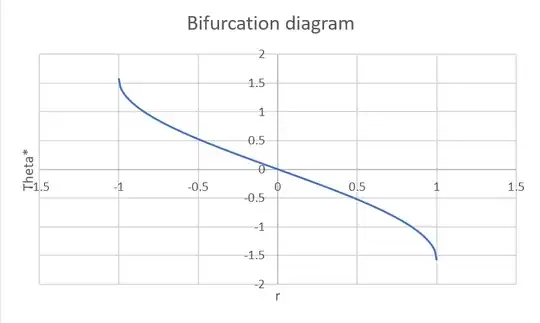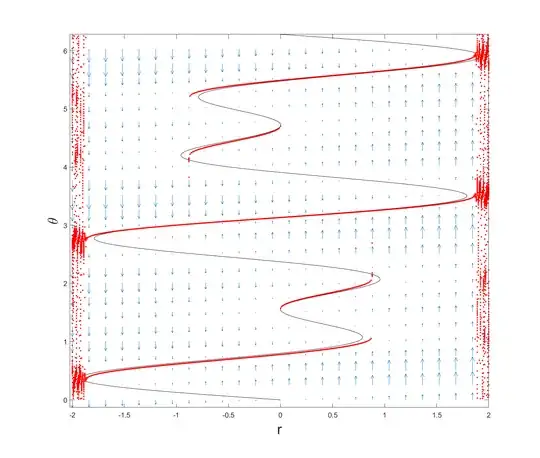I've been reading about the vector field on a circle, and how it's used to describe stable points for periodic motion. I have also read about how bifurcation diagrams describe changes in positions of visible stable points of a system with respect to a certain parameter.
Let's consider a system described by the vector field on a circle described by $$\dot{\theta}=\sin\theta + r.$$ This system should be valid because the value of $\dot{\theta}$ is the same for all equivalent values of theta (i.e. $\theta=0$ and $\theta=2\pi$ yield the same $\dot{\theta}$). Clearly, the stable point is going to be $\arcsin(-\theta)$ and it is unique.
I tried to think about the bifurcation diagram for this and I decided that it should be something like this:

That doesn't seem too meaningful; it's as simple as plotting the solutions for $\dot{\theta}=0$.
I've considered a few other kinds of real, intuitive periodic systems: simple pendulums, damped pendulums, and double pendulums, but I can't find any situations where you'd get something like a pitchfork/saddle-node bifurcation.
Are there any periodic systems which have more meaningful bifurcation diagrams? By 'meaningful', I'm referring to diagrams which express stuff which isn't obvious through elementary transformation of an equation. For example, I view the above diagram as 'kind-of meaningless' because it's really just $r=\arcsin(-\theta)$.
Alternatively, is there a special significance of bifurcation diagrams for such systems?
